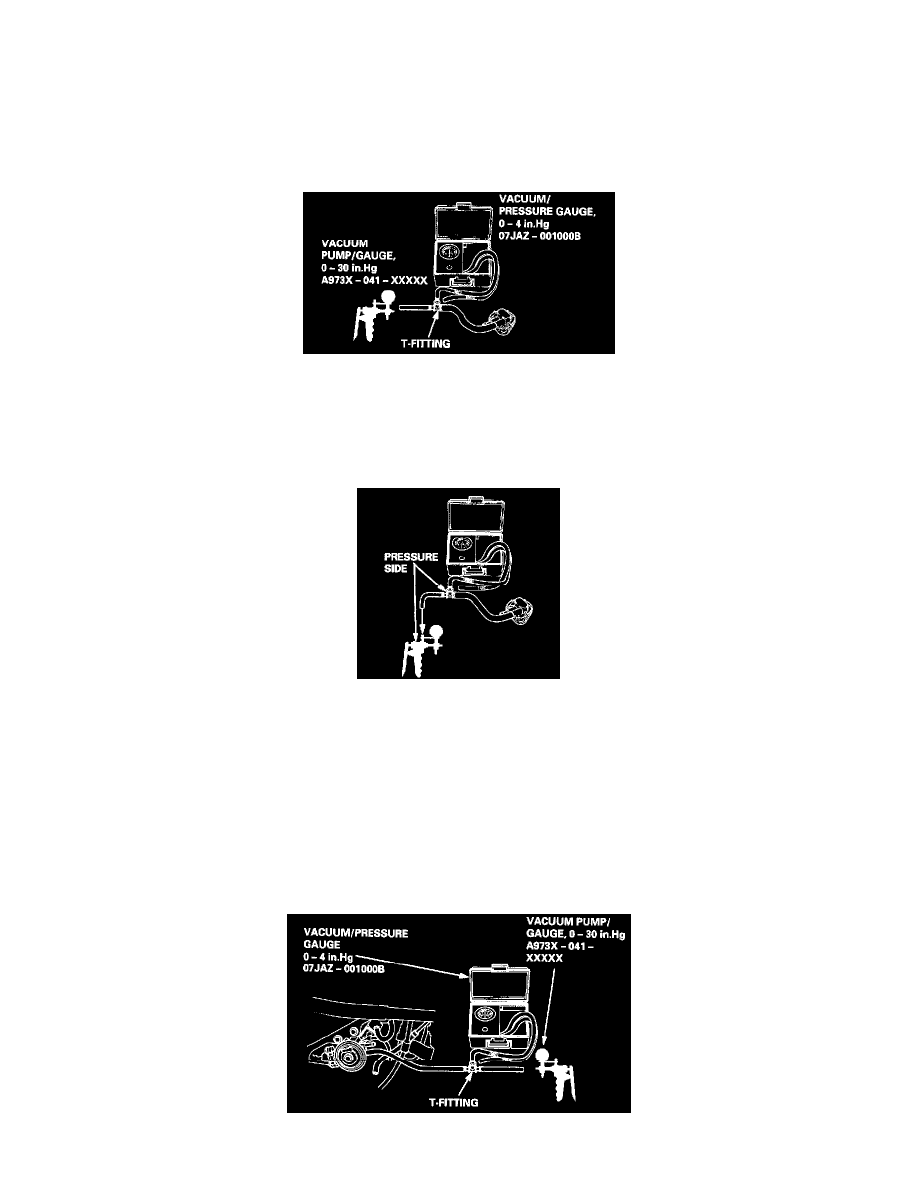Civic CX Hatchback L4-1590cc 1.6L SOHC MFI (1997)

Two-Way Valve: Testing and Inspection
Evaporative Emission (EVAP) Two Way Valve Testing
['96 D16Y5 engine, '96 D16Y7 engine, '96 D16Y8 engine (sedan), '97 D16Y5 engine, '97 D16Y7 engine (coupe: KA, KC models, sedan: (KA,
KC, KL (DX) models, hatchback: all models), '97 D16Y8 engine (sedan: (KA, KC models)]:
1. Remove the fuel fill cap.
2. Remove the vapor line from the EVAP two way valve on the fuel tank, and connect it to a T-fitting from a vacuum gauge and a vacuum pump as
shown.
3. Apply vacuum slowly and continuously while watching the gauge. The vacuum should stabilize momentarily at 0.7-2.0 kPa (5-15 mmHg, 0.2-0.6
in.Hg).
If the vacuum stabilizes (valve opens) below 0.7 kPa (5 mmHg, 0.2 in.Hg) or above 2.0 kPa (15 mmHg, 0.6 in.Hg), install a new valve and
retest.
4. Move the vacuum pump hose from the vacuum fitting to the pressure fitting, and move the vacuum gauge hose from the vacuum side to the
pressure side as shown.
5. Slowly pressurize the vapor line while watching the gauge. The pressure should stabilize at 1.3-4.7 kPa (0-35 mmHg, 0.4-1.4 in.Hg).
-
If the pressure momentarily stabilizes (valve opens) at 1.3-4.7 kPa (10-35 mmHg, 0.4-in. Hg), the valve is OK.
-
If the pressure stabilizes below 1.3 kPa (10 mmHg, 0.4 in.Hg) or above 4.7 kPa (35 mmHg, 1.4 in.Hg), install a new valve and retest.
Evaporative Emission (EVAP) Two Way Valve Testing
['96 D16Y8 engine (coupe), '97 D16Y7 engine (coupe: KL model, sedan: KL (LX) model), '97 D16Y5 engine (coupe: all models, sedan: KL
model, '98-all models)]:
1. Remove the fuel fill cap.
2. Remove the vapor line from the EVAP two way valve, and connect it to a T-fitting from a vacuum gauge and a vacuum pump as shown.
